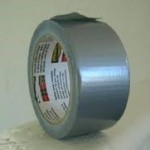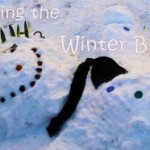Summer means trouble with plantar warts. That’s because the virus that causes warts thrives in warm, moist environments. Find out about plantar warts, and what you can do this year to avoid getting them.
Warts are the result of a contagious virus called human papillomavirus, or HPV and while they can appear in anyone of any age, they are more likely to bother children and teenagers. These warts are not deadly, but they can be painful. They grow on the top layer of skin on the undersurface of the feet. Irritating to the surrounding skin, plantar warts are often tender and sometimes make it difficult to walk.
People who regularly use public athletic facilities face an increased risk of exposure, especially if they walk around barefoot in the showers or on padded exercise mats. The surfaces around pools are another common danger zone. In other words, summertime activities increase our potential exposure to warts.
The test to know if you have a plantar wart
If you are not sure whether you have a plantar wart (as they can sometimes be confused with a callus) just squeeze the lesion between your fingers as if pinching. If this action is painful, you can be 100% certain that you have a plantar wart that you need to treat.
Prevention
You can take basic precautions to prevent contracting plantar warts: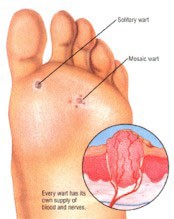
- Never share towels or shoes with other people at the gym
- Avoid walking barefoot- wear flip flops at all times
- Change shoes and socks daily
- Keep feet clean and dry
- Check children’s feet periodically
- Avoid direct contact with warts from other persons or from other parts of the body
- Do not ignore growths on, or changes in, your skin
Take good care of your feet. Warts tend to grow more easily in the cracks and crevices of injured skin.
Warts are highly contagious, so never touch someone’s wart.
Nearly all warts are harmless but once they pop up on conspicuous places such as the face or hands, most people will do almost anything to get rid of them.
Conventional treatments offer to freeze, burn, inject, shave, electrocute, poison, or dig the wart out but with varying degrees of success. Some can cause scarring while with others, the wart may regrow. For patient sufferers, just waiting may also bring success as 65% of warts disappear all by themselves with time.
Duct tape occlusion: Plantar warts that are not painful do not need to be treated, but can be removed through duct tape occlusion. Completely cover the area with duct tape for about one week. Remove the tape, soak the foot, and debride the area with a pumice stone. After a day, reapply the duct tape. Continue this treatment until the lesion is gone.
Oil of Oregano: To utilize oregano for the inhibition of warts, begin with mixing 1 teaspoon of oregano oil with around 8 teaspoons of coconut or olive oil. This mixture will help to dilute the oregano oil proficiently while still maintaining the integrity of the oil. The addition of coconut or olive oil will also present some great rejuvenating characteristics when it comes to the skin and overall body health.
Now apply the mixture around four to six times throughout the day. You can also add tape over the wart to minimize the ability for the growth to receive proper oxygen. This can help to speed up the process. After about a week of use with organic oregano oil, you should notice a difference in the size of the wart.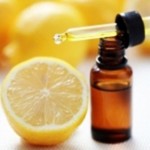
Lemon Essential Oil- You can also apply a few drops of lemon essential oil on the plantar wart. Use it for a few days, continuously. This greatly helps in getting rid of the warts.
Diet: Eat a diet based on whole foods to support your immune system. Avoid processed foods that are high in simple carbohydrates as they can weaken your immune system and reduce your body’s effectiveness in fighting the virus that causes warts.
Supplements: The following nutritional supplements will support immune function and healing, which will help combat the viral infections that cause plantar warts. Take 500mg of vitamin C twice a day. Take 100,000 IU of beta carotene and 400 IU of vitamin E a day. B complex vitamins will help to reduce the effects of stress, which can weaken your immune system.
Thinking More Deeply about Warts
Warts are often seen as nothing more than a minor nuisance – to remove the wart is to remove the problem. But this isn’t completely true.
Their presence on top of the skin warns of a deeper weakness or susceptibility that allows them to continue and flourish. While removing the wart creates a blemish-free skin, it does nothing to correct this underlying weakness – the person is still vulnerable to future health problems.
A more holistic approach is needed and this is where homoeopathy excels. By treating the wart as just one of the person’s health problems and prescribing a homeopathic remedy accordingly, widespread improvements are achieved and the underlying weakness repaired.
For those who would like to hurry them along though, homoeopathy can help – and in more ways than one.
Homeopathy
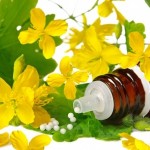 When using homoeopathy for warts, good results are achieved when the remedy corresponds to the characteristics of the person as well as the shape and appearance of the wart. Warts respond best to individualized treatment when using homeopathy.
When using homoeopathy for warts, good results are achieved when the remedy corresponds to the characteristics of the person as well as the shape and appearance of the wart. Warts respond best to individualized treatment when using homeopathy.
Read on for the descriptions of these common wart remedies:
Antimonium crudum: Hard, smooth warts that often appear in groups. Irritability and a thickly coated white tongue also suggest the need for this remedy. The person may also overeat and have various digestive complaints.
Calcarea carbonica: Round, hard, solitary warts. Often useful for endophytic warts that have a horny wall surrounding a central depression. Indicated in people with clammy hands and feet who prefer routine and the familiar rather than change and the unknown.
Causticum: Old, large warts on the face (especially the nose), under the fingernails, or warts on fingertips that bleed easily suggest the need for this remedy. The warts also tend to be hard, inflamed, and painful and sit on whitish-yellow, dirty looking skin. People who benefit from this remedy tend to fear that something awful will happen and feel intensely sympathetic about the hardship of others.
Natrum muriaticum: An important remedy for warts on the palms of the hand and soles of the feet. Indicated in those who are closed, reserved and sensitive.
Nitricum acidum: This remedy is indicated in treating large, fissured or gold-yellow warts that itch and sting or bleed upon washing. This remedy is also indicated for people who are anxious about health and worry about cancer. Often useful for endophytic warts that have a horny wall surrounding a central depression or the more common plantar wart.
Ruta graveolens (Ruta): This is a leading remedy for plantar warts. People needing Ruta are prone to injuries of tendons and periosteum of bone.
Thuja occidentalis (Thuj.): The most common remedy for various kinds of warts. If no other remedy is obviously indicated, consider Thuja. Particularly indicated in isolated, jagged warts that smell or bleed easily or mosaic warts on the sole of the foot. Indicated in those prone to numerous growths or tumors and who worry too much about what people think of them.
Finally, a Warning About Warts
Some skin cancers such as squamous cell carcinomas look similar to warts so it is important to get a firm diagnosis if there is any doubt.
If genital warts are present it is also important for women to have a PAP smear to check that pre-cancerous changes have not taken place on the cervix.
For any comments or further information, please give us a call at (519) 603-0505, or book an appointment through our online booking system.
In health,
Irene Schwens,
Hom, DHMHS, C.Tran.
Owner/Homeopath
